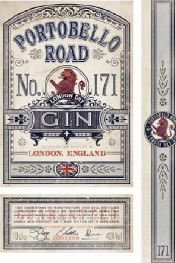Geen geldig beeldmerk voor Portobello Road Gin vanwege PORTO
OHIM 17 april 2015, IEF 15270 (Instituto Dos Vinhos Do douro e Do Porto against Walker Morris) Uitspraak ingezonden door Thera Adam-van Straaten, Kneppelhout Korthals Advocaten. Merkenrecht. Geografische aanduiding. De Federatie van Porto producenten, houder van oorsprongsbenaming PORTO, heeft oppositie ingesteld tegen de CTM-aanvrage voor 'PORTOBELLO ROAD GIN' door Walker Morris. Het OHIM heeft de oppositie toegewezen gezien de visuele, conceptuele en auditieve overeenkomsten. Consumenten hebben in het algemeen de neiging zich op het eerste deel van het element te richten. Bijgevolg is het samenvallen van de elementen PORTO in beide merken. Consumenten kunnen zelden direct vergelijken waardoor het woord PORTO voor misleiding kan zorgen bij de consument. Bovendien is het woord BELLO zwak voor de betrokken waren. Oppositie wordt gegrond verklaard. [red. PORTOBELLO ROAD heeft hoger beroep aangetekend]
Uitspraak ingezonden door Thera Adam-van Straaten, Kneppelhout Korthals Advocaten. Merkenrecht. Geografische aanduiding. De Federatie van Porto producenten, houder van oorsprongsbenaming PORTO, heeft oppositie ingesteld tegen de CTM-aanvrage voor 'PORTOBELLO ROAD GIN' door Walker Morris. Het OHIM heeft de oppositie toegewezen gezien de visuele, conceptuele en auditieve overeenkomsten. Consumenten hebben in het algemeen de neiging zich op het eerste deel van het element te richten. Bijgevolg is het samenvallen van de elementen PORTO in beide merken. Consumenten kunnen zelden direct vergelijken waardoor het woord PORTO voor misleiding kan zorgen bij de consument. Bovendien is het woord BELLO zwak voor de betrokken waren. Oppositie wordt gegrond verklaard. [red. PORTOBELLO ROAD heeft hoger beroep aangetekend]
The assessment is affected by the fact that the earlier sign is an appellation of origin, not a trade mark. Although the earlier sign ‘PORTO’ is descriptive for a type of wine, account must be taken of the fact that the opponent has been afforded exclusive rights to use this term both for goods for which it is descriptive as well as for comparable goods. The raison d’être behind this registration is to control and protect the use of the appellations of origin ‘PORTO’ for wine. The issue in question is whether or not the relevant public for wine will be mislead the consumer as to the true origin of the product when encountering the contested application, thinking that it is connected with port wine produced in the Demarcated Region of Douro.
The goods are comparable. The earlier sign is entirely included in the beginning of the contested sign. Consumers generally tend to focus on the first element of a sign when being confronted with a trade mark. This is justified by the fact that the public reads from left to right, which makes the part placed at the left the one that first catches the attention of the reader. Consequently, the coincidence in the elements ‘PORTO’ of the marks is particularly relevant when assessing a possible mislead of the consumer.
Account must also be taken of the fact that consumers only rarely have the opportunity to make a direct comparison between the different marks and must place their trust in the imperfect picture of them that they have kept in mind. In addition, it is quite common for marks for port wine to be composed of two or even three words. Furthermore, the element ‘BELLO’ is, at least for a part of the relevant public, rather weak for the goods at issue. Therefore, contrary to the applicant’s observations, the possibility cannot be excluded that at least some of the consumers will assume that the contested sign is a sub-denomination, for export reasons, of the appellations of origin.
Bearing this in mind, the Office finds that the contested application can mislead the consumer in relation to the protected terms conferred under the EU regulation when applied to wines and spirits. Accordingly, EU law gives the proprietor the right under Article 8(4) CTM to prohibit the use of the CTM application for all the contested goods.





















































































